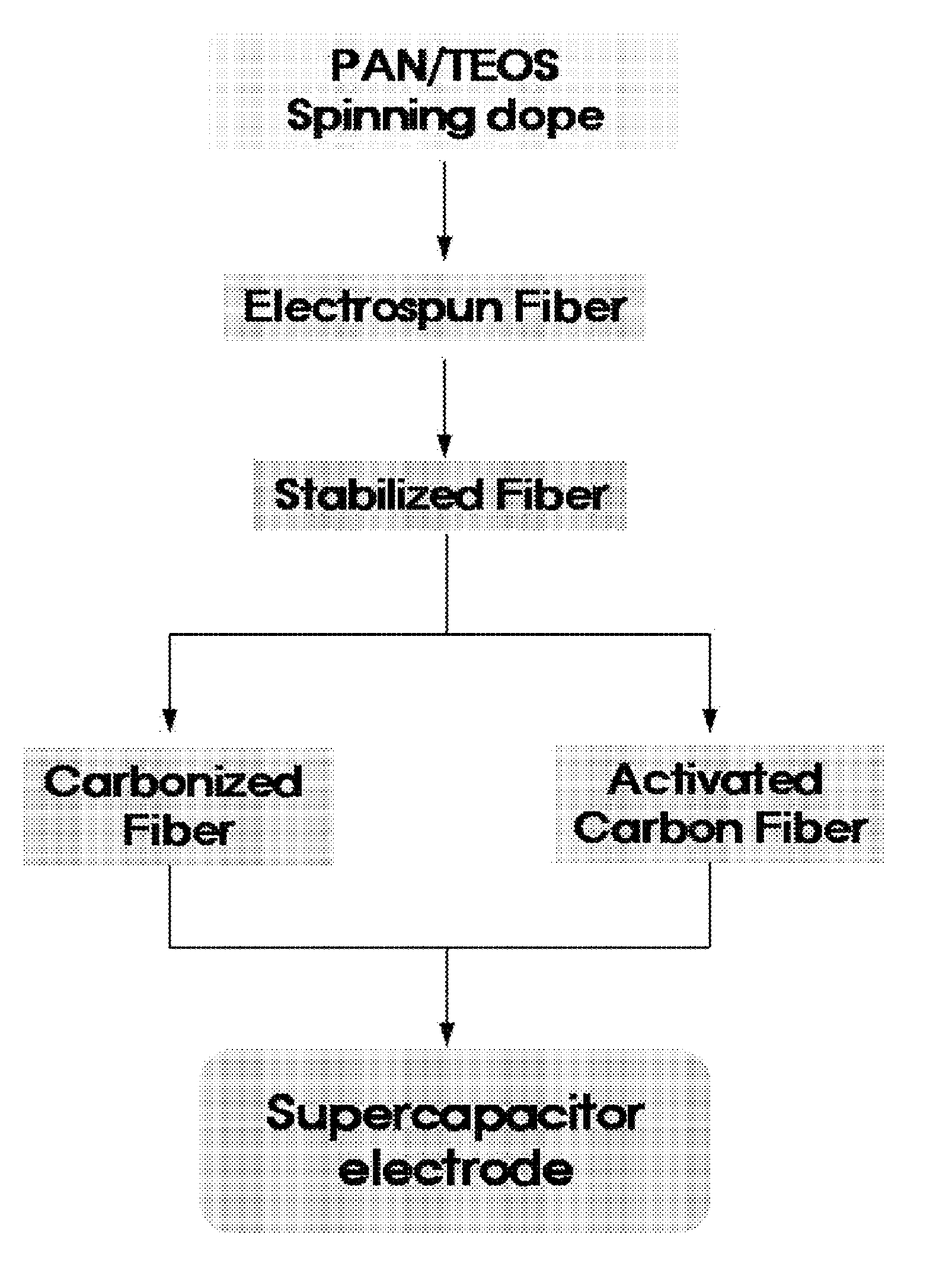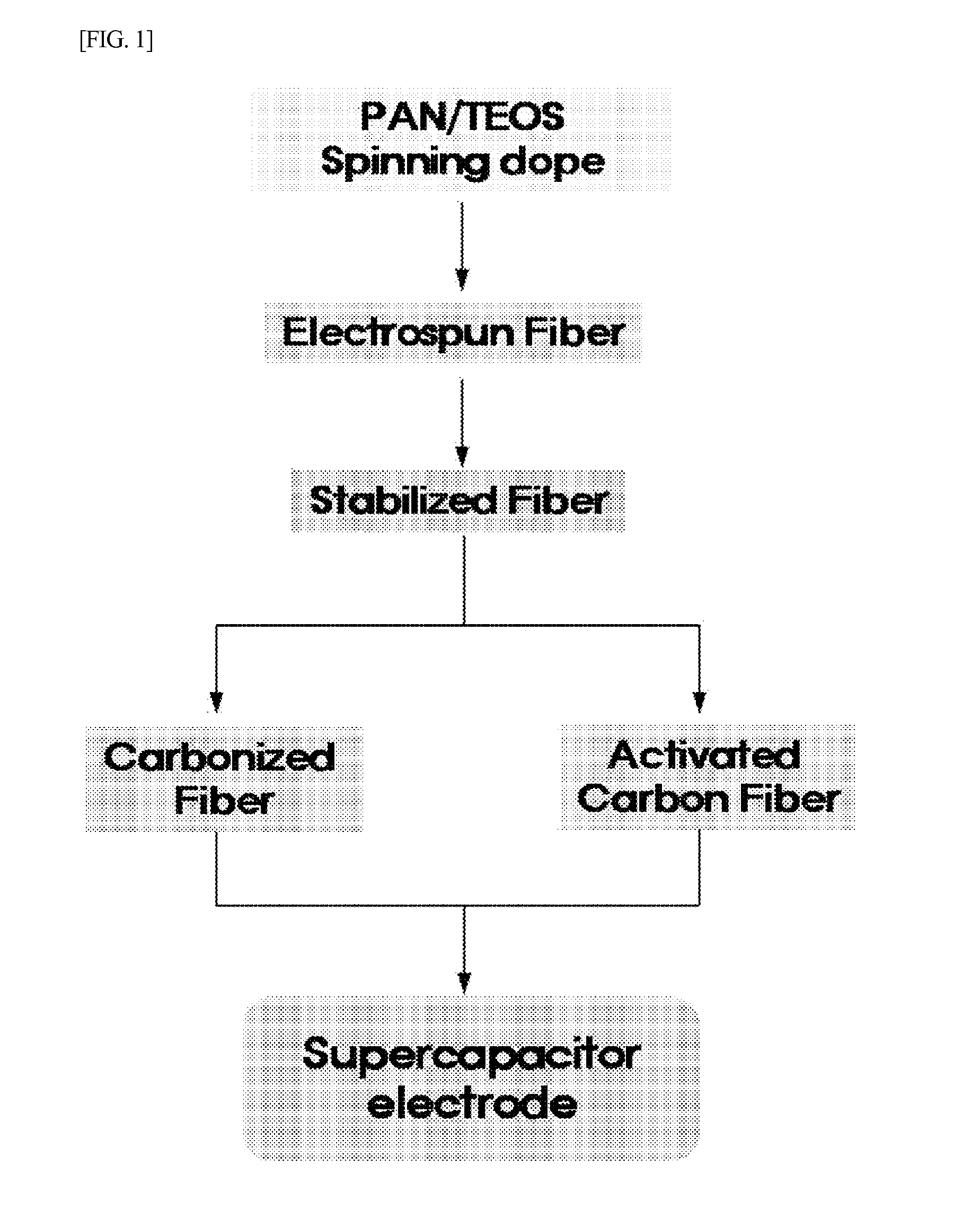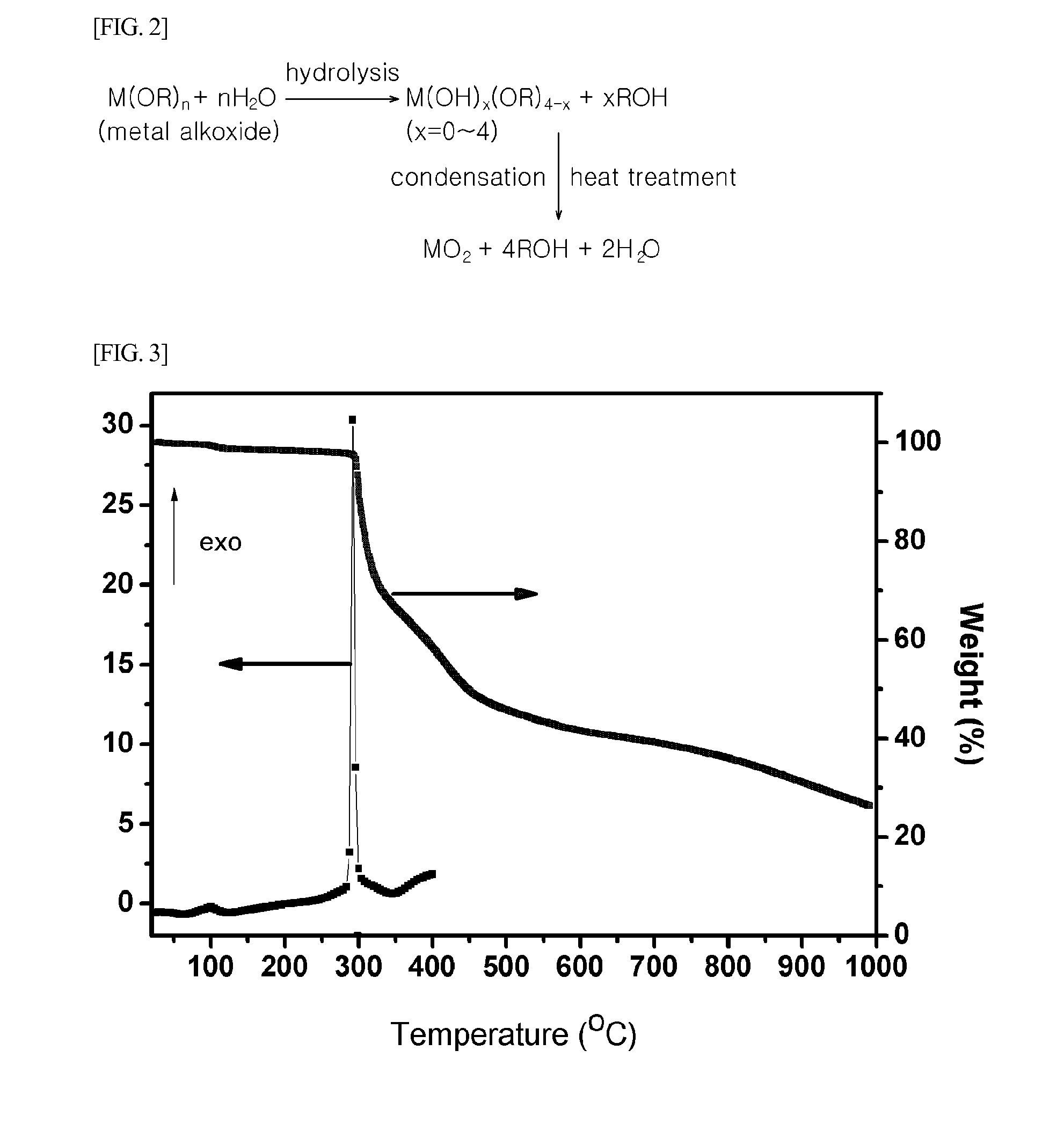Method for preparing porous carbon nanofibers containing a metal oxide, porous carbon nanofibers prepared using the method, and carbon nanofiber products including same
a technology of porous carbon nanofibers and carbon nanofibers, which is applied in the field of carbon nanofibers, can solve the problems of limited capacity and reaction rate, difficult to reproduce adsorption and desorption rate, and difficult to use activated carbon fibers as energy storage media, etc., and achieves fast adsorption and desorption, easy control, and increased energy density.
- Summary
- Abstract
- Description
- Claims
- Application Information
AI Technical Summary
Benefits of technology
Problems solved by technology
Method used
Image
Examples
example 1
[0080]A polyacrylonitrile (PAN) homopolymer as a carbon nanofiber precursor and tetraethyl orthosilicate (Si(OEt)4, TEOS) (Si-alkoxide) as a metal alkoxide [(M(OR)n] were prepared. The prepared PAN and TEOS were dissolved in the solvent DMF, thereby preparing a carbon nanofiber precursor solution. Herein, the carbon nanofiber precursor solution was prepared to have a carbon nanofiber precursor concentration of 10% and to contain PAN and Si-alkoxide at a ratio of 80:20 wt %.
[0081]Then, the prepared carbon nanofiber precursor solution was electrospun to prepare nonwoven fabric webs consisting of nanofibers, thereby obtaining electrospun fibers.
[0082]In the electrospinning process, a voltage of 25 kV was applied to each of the nozzle and collector of the electrospinning apparatus, and the distance between the spinneret and the collector was set at about 20 cm and could be changed if necessary.
[0083]The electrospun fibers resulting from the electrospinning process were stabilized by pla...
example 2
[0084]The stabilized fibers were carbonized by heating the fibers to 800° C. at a rate of 5° C. / min in an inert atmosphere and then maintaining the fibers at that temperature for 50 minutes, thereby preparing porous carbon nanofibers 1.
example 3
[0085]The procedure of Examples 1 and 2 was repeated, except that the carbonization temperature was increased to 900° C., thereby preparing porous carbon nanofibers 2.
PUM
| Property | Measurement | Unit |
|---|---|---|
| flow rate | aaaaa | aaaaa |
| temperature | aaaaa | aaaaa |
| size | aaaaa | aaaaa |
Abstract
Description
Claims
Application Information
 Login to View More
Login to View More - R&D
- Intellectual Property
- Life Sciences
- Materials
- Tech Scout
- Unparalleled Data Quality
- Higher Quality Content
- 60% Fewer Hallucinations
Browse by: Latest US Patents, China's latest patents, Technical Efficacy Thesaurus, Application Domain, Technology Topic, Popular Technical Reports.
© 2025 PatSnap. All rights reserved.Legal|Privacy policy|Modern Slavery Act Transparency Statement|Sitemap|About US| Contact US: help@patsnap.com



